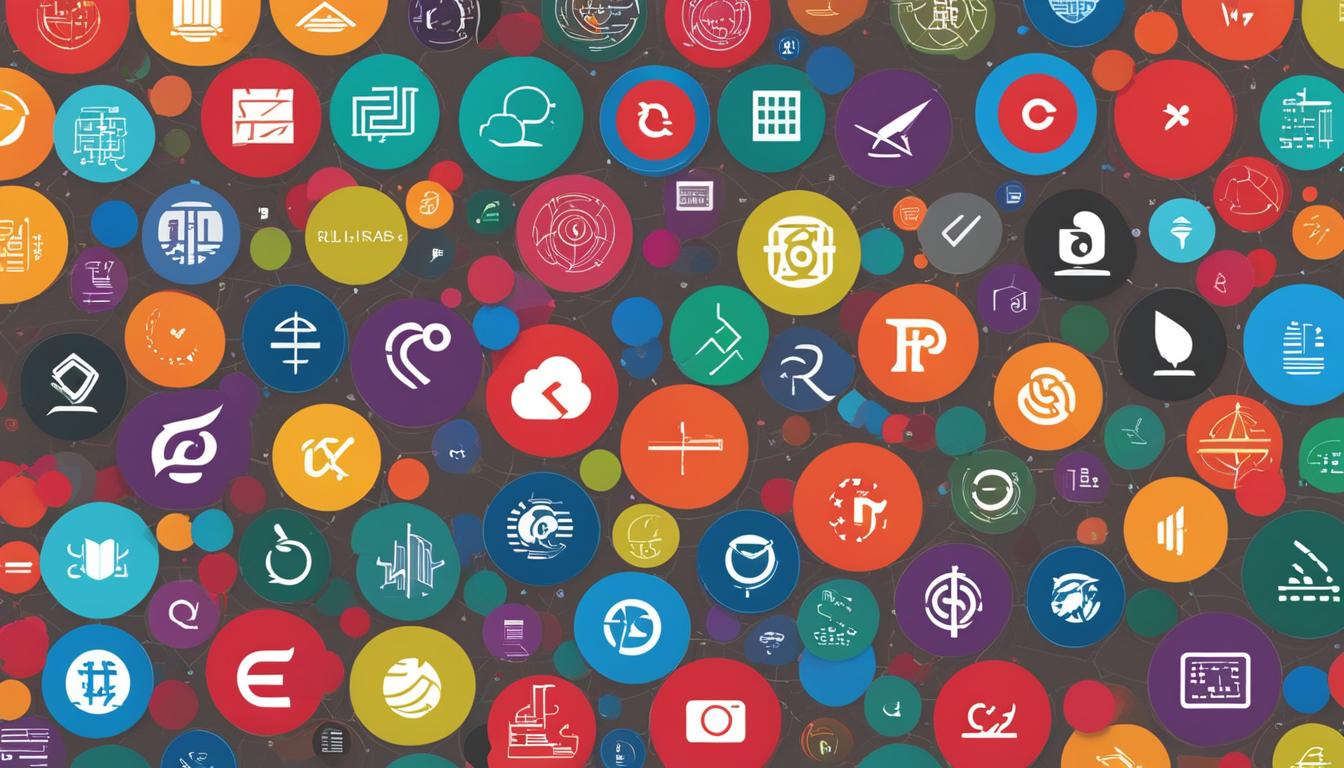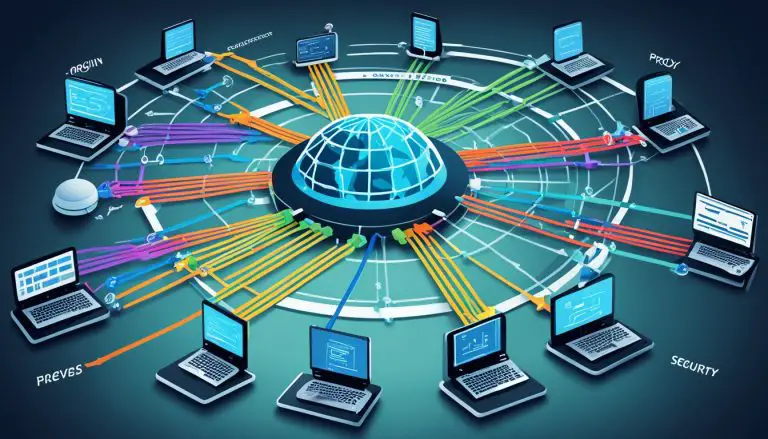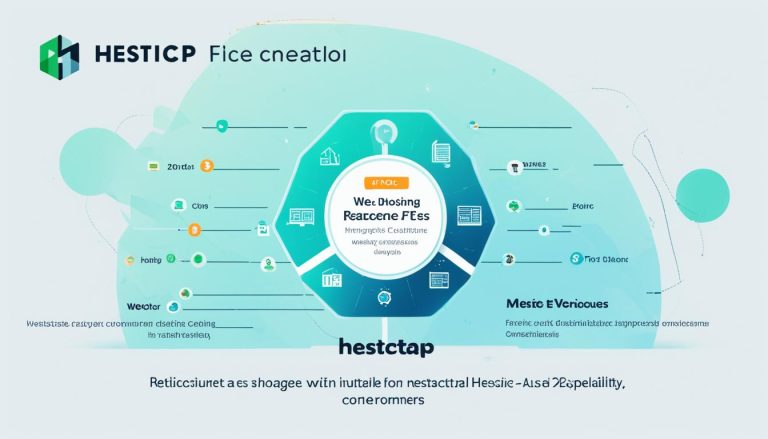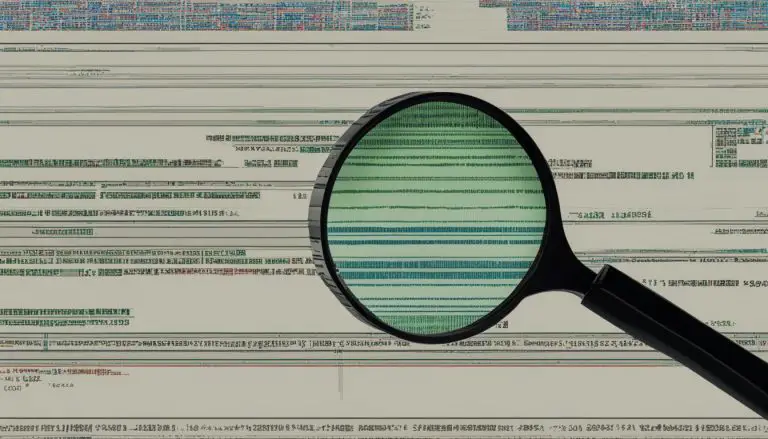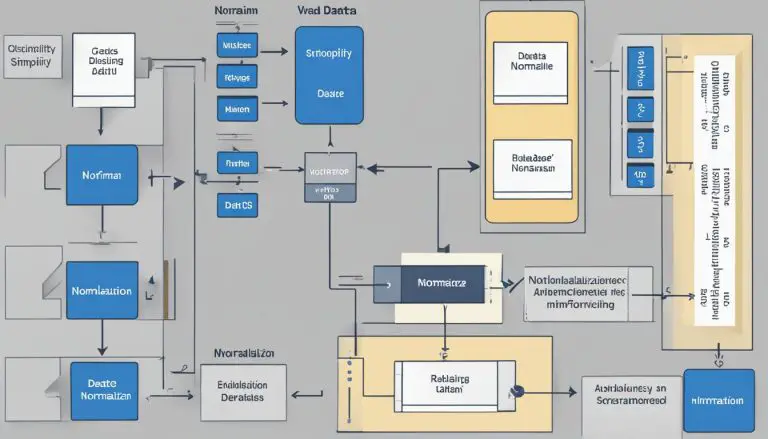Understanding Computing: What is a Programming Language?
In the world of computing, programming languages play a crucial role in enabling us to communicate with computers and instruct them to perform specific tasks. But what exactly is a programming language? Let’s dive into the basics.
A programming language is a systematic notation system used for writing computer programs. It involves defining the syntax and semantics, which determine how the instructions are expressed and interpreted by the computer. Programming languages are implemented through compilers or interpreters, making them executable by the computer.
Programming language theory is an area of study that focuses on the design, implementation, analysis, and classification of programming languages. This field delves into the intricacies of programming language development and seeks to improve the efficiency and functionality of these languages.
Key Takeaways:
- A programming language is a systematic notation system used to write computer programs.
- It involves defining the syntax and semantics of instructions.
- Programming languages have at least one implementation in the form of a compiler or interpreter.
- Programming language theory studies the design, implementation, analysis, and classification of programming languages.
Programming Languages vs Computer Languages
When discussing the world of computing, two terms often come up: computer languages and programming languages. While these terms are sometimes used interchangeably, their usage can vary depending on the context. Let’s take a closer look at the definitions of these terms and explore the relationship between them.
A computer language, also known as a computer programming language, is a system of communication between humans and computers. It encompasses the syntax and semantics that enable humans to write instructions that can be executed by a computer. On the other hand, a programming language is a subset of computer languages. It specifically refers to languages that are Turing complete, meaning they have the ability to solve any computational problem given enough time and resources.
“Computer languages and programming languages play distinct roles in the world of computing. While computer languages serve as a broad category encompassing all forms of communication between humans and computers, programming languages specifically refer to those languages that are Turing complete.”
It’s important to note that not all computer languages are programming languages. Formal specification languages and input formats that affect computer behavior are also considered computer languages. These languages may not possess all the features of a programming language, such as the ability to manipulate data structures or control flow of execution. However, if a markup language like HTML or XML has computational semantics, it can share syntax with programming languages.
In summary, the distinction between computer languages and programming languages lies in their scope and capabilities. While computer languages encompass a wide range of communication systems between humans and computers, programming languages specifically refer to languages that are Turing complete and capable of solving any computational problem. Understanding this distinction is essential in navigating the vast landscape of computer programming and language development.
Table: Comparison of Computer Languages and Programming Languages
| Computer Languages | Programming Languages |
|---|---|
| Encompasses all forms of communication between humans and computers | A subset of computer languages that are Turing complete |
| Includes formal specification languages and input formats affecting computer behavior | Allows manipulation of data structures and control of execution flow |
| Markup languages like HTML and XML may be considered computer languages | Shares syntax with markup languages if computational semantics are present |
Domain and Target of Programming Languages
Programming languages serve as a means of communication between people and computers, facilitating the interaction necessary for effective computing. While markup languages like HTML and XML are not typically considered programming languages, they can share syntax with programming languages if they have computational semantics. Abstractions provided by programming languages allow for the definition and manipulation of data structures, as well as the control of execution flow.
Programming languages, in their varying forms and paradigms, enable developers to write code that instructs computers to perform specific tasks. These tasks range from simple calculations to complex operations, including but not limited to displaying images, changing text, browsing websites, building mobile apps, and exploring outer space. By bridging the gap between humans and computers, programming languages play a crucial role in driving technological advancements.
One of the notable aspects of programming languages is their ability to encapsulate domain-specific knowledge. Different programming languages excel in different areas, which is why developers choose specific languages based on the nature of the problem they are solving. For example, languages like MATLAB are commonly used for numerical computing and data analysis, while languages like JavaScript are widely adopted for web development. The target audience of programming languages encompasses a wide range of professionals, including software developers, data scientists, system administrators, and researchers.
Comparison of Programming Languages and Markup Languages:
To better understand the differentiation between programming languages and markup languages, let’s compare their characteristics:
| Programming Languages | Markup Languages |
|---|---|
| Used for instructing computers to perform tasks. | Used for structuring and formatting documents. |
| Can define data structures and control execution flow. | Focus on defining the structure and presentation of content. |
| Have computational semantics and allow for calculations. | Do not have computational semantics by default. |
| Examples: Python, Java, C++, Ruby. | Examples: HTML, XML, Markdown, LaTeX. |
By recognizing the distinct domain and target of programming languages, we can appreciate their significance in enabling us to harness the power of computers.
History of Programming Languages
In the early stages of computer programming, two primary types of languages were used: machine language and assembly language. Machine language consists of binary code that represents specific instructions directly executable by the computer’s hardware. Assembly language, on the other hand, uses mnemonic codes to represent machine language instructions, making it easier for programmers to write and understand.
As the need for more advanced programming capabilities arose, high-level languages were developed. One of the earliest high-level languages was FORTRAN (short for “Formula Translation”), which was introduced in the 1950s and widely used for scientific and engineering calculations. FORTRAN allowed programmers to write code using English-like statements, making it more accessible than machine or assembly language.
Another influential programming language from this era was ALGOL (short for “Algorithmic Language”). ALGOL introduced the concept of block structure, which allowed for better organization and modularization of code. This language had a significant impact on subsequent programming languages, influencing their syntax and design principles.
In the 1970s, the programming language C was developed by Dennis Ritchie at Bell Labs. C became widely popular due to its simplicity and efficiency, making it suitable for a wide range of applications. It served as the foundation for many other programming languages, including C++, Java, and C#.
| Programming Language | Year Developed |
|---|---|
| Machine Language | 1940s |
| Assembly Language | 1950s |
| FORTRAN | 1957 |
| ALGOL | 1958 |
| C | 1972 |
These early programming languages laid the foundation for the development of modern programming languages. They paved the way for more intuitive and powerful programming paradigms, enabling developers to create complex software systems more efficiently.
How does Computer Programming Work?
Computer programming is a fascinating process that involves writing code in a programming language to instruct a computer to perform specific tasks. The code is then compiled into a language that the computer can understand and execute. This process requires a deep understanding of programming concepts and syntax, as well as attention to detail and problem-solving skills.
Writing code is the foundation of computer programming. Programmers use various programming languages, such as Python, Java, or C++, to write instructions that tell the computer what to do. These instructions can range from simple calculations to complex algorithms that control the flow of data and manipulate information.
The next step in the computer programming process is the compilation of the code. A compiler is a software tool that translates the code written by the programmer into machine language, which is the language that the computer understands. The compiled code is then executed by the computer, and it performs the tasks specified by the programmer. This could involve displaying images, processing data, or interacting with users.
| Tasks performed by computer programming |
|---|
| Creating web applications |
| Developing mobile apps |
| Automating repetitive tasks |
| Analyzing and manipulating data |
Computer programming plays a crucial role in various aspects of modern life. It enables us to browse websites, use mobile apps, and even explore outer space. The possibilities are endless, and the only limitation is our imagination. So, if you have an interest in technology and problem-solving, computer programming may be the perfect field for you to explore.
Most Used Programming Languages
When it comes to programming languages, there are several that stand out as the most commonly used in the industry. These languages play a crucial role in various domains, from web development to data analysis. Here are some of the most widely used programming languages today:
- JavaScript: JavaScript is a versatile language that is primarily used for front-end web development. It enables dynamic and interactive elements on websites, making it a fundamental language for building modern web applications.
- HTML/CSS: While not technically programming languages, HTML and CSS are essential for creating web pages. HTML provides the structure, while CSS handles the visual styling, allowing developers to design and present content effectively.
- SQL: SQL (Structured Query Language) is used for managing and manipulating relational databases. It allows developers to retrieve, store, and modify data, making it a vital language for working with large datasets.
- Python: Python is a versatile language known for its simplicity and readability. It is widely used in various fields, including web development, data analysis, machine learning, and scientific computing.
- TypeScript: TypeScript is a superset of JavaScript that adds static typing to the language. It enhances the productivity and maintainability of large-scale JavaScript applications and is widely adopted in the development of robust software systems.
These programming languages play different roles and have their unique strengths. JavaScript is the go-to language for web interactivity, HTML/CSS creates the foundation for web design, SQL manages data, Python provides flexibility across domains, and TypeScript adds type safety to JavaScript. Each language serves a specific purpose and is essential for modern software development.
In conclusion, staying up-to-date with the most used programming languages is crucial for any developer. JavaScript, HTML/CSS, SQL, Python, and TypeScript are just a few examples of the languages that are in high demand across different areas of the industry. Whether you’re a web developer, data scientist, or software engineer, having knowledge of these languages can open up a world of opportunities in the rapidly evolving field of programming.
Types of Programming Languages
Programming languages can be classified into different types, each with its own characteristics and designed for specific purposes. Here are some of the main types:
Procedural programming languages
Procedural programming languages focus on procedures and sets of instructions that are executed sequentially. They are based on a linear top-down approach, where the program is divided into a series of steps. Examples of procedural programming languages include C, Pascal, and BASIC.
Functional programming languages
Functional programming languages treat computation as the evaluation of mathematical functions. They emphasize immutable data and avoid changing state and mutable data. Popular functional programming languages include Haskell, Lisp, and Erlang.
Object-oriented programming languages
Object-oriented programming languages allow the creation and manipulation of objects that contain both data and methods. They focus on encapsulation, inheritance, and polymorphism. Some well-known object-oriented programming languages are Java, C++, and Python.
Scripting languages
Scripting languages are often interpreted at runtime and are used to automate specific tasks or perform rapid prototyping. They are usually more flexible and easier to learn than compiled languages. Examples of scripting languages include JavaScript, Perl, and Ruby.
Logic programming languages
Logic programming languages are based on formal logic and are used to solve problems through a set of logical rules and constraints. They allow the programmer to describe the problem domain and let the language’s inference engine find the solution. Prolog is a well-known logic programming language.
Each type of programming language has its own advantages and is suited for different types of tasks. Choosing the right programming language depends on factors such as the project requirements, the complexity of the task, and personal preferences.

Getting Started in Computer Programming
When embarking on your journey in computer programming, it is important to set clear programming goals. Are you interested in web development, data analysis, artificial intelligence, or something else? Knowing your objectives will guide your learning path and help you stay focused.
One of the best ways to start learning programming is by enrolling in an introductory programming course. These courses, available both online and in-person, provide structured guidance and teach you the fundamentals of popular programming languages. They cover essential topics such as variables, loops, functions, and data structures.
Connecting with other programmers is also crucial. Join online communities, participate in coding forums, and attend programming meetups or events. Networking with experienced programmers provides valuable insights, mentorship opportunities, and a platform for exchanging knowledge and ideas.
Completing projects is an important step in your programming journey. Apply the knowledge gained from courses and discussions to solve real-world problems. Start with small projects and gradually tackle more complex ones. Building a portfolio of projects will not only showcase your skills to potential employers but also enhance your understanding of programming concepts.
Exploring the future in programming is an exciting prospect. Stay up to date with the latest trends and advancements in the field. Follow influential programmers and tech blogs, read books, and engage in continuous learning. As technology evolves rapidly, being adaptable and open to new tools and techniques will keep you ahead in the programming world.
Table: Comparison of Introductory Programming Courses
| Course Name | Platform | Duration | Cost |
|---|---|---|---|
| Introduction to Python Programming | Online Learning Platform | 6 weeks | Free |
| Java Fundamentals | University Program | 12 weeks | $99 |
| Web Development Bootcamp | Coding Bootcamp | 10 weeks | $3,500 |
Remember, the journey in computer programming is a continuous learning process. Embrace challenges, persevere through obstacles, and celebrate your victories along the way. Whether you aspire to build groundbreaking software or contribute to open-source projects, the world of programming is filled with endless possibilities.
Conclusion
In conclusion, a programming language is the fundamental tool used for writing computer programs. It provides a system of notation that allows humans to communicate with computers effectively. By understanding the syntax and semantics of a programming language, developers can create instructions that computers can execute.
There are various types of programming languages, each with its own characteristics and purposes. Procedural languages focus on step-by-step procedures, functional languages emphasize mathematical functions, and object-oriented languages revolve around objects and classes. Additionally, scripting languages automate repetitive tasks, while logic languages are rooted in formal logic.
To embark on your journey in computer programming, it is crucial to set clear programming goals. Enrolling in an introductory programming course will equip you with essential skills and knowledge of popular programming languages. Furthermore, connecting with other programmers will provide opportunities for collaboration and exposure to emerging trends. As you progress, completing projects will allow you to apply your skills and discover the vast possibilities within programming.
Start your programming adventure today and explore the incredible world of modern computing. With dedication and continuous learning, you can unlock endless opportunities and contribute to the ever-evolving field of technology.
FAQ
What is a programming language?
A programming language is a system of notation for writing computer programs. It allows humans to communicate with computers by providing a set of rules and syntax for writing instructions that the computer can understand and execute.
What is the difference between computer languages and programming languages?
While the terms are sometimes used interchangeably, computer languages and programming languages can have different meanings. Some consider programming languages to be a subset of computer languages. Computer languages refer to any system of notation used to communicate with computers, while programming languages specifically focus on writing instructions for creating computer programs.
What is a Turing complete language?
Turing complete languages are those that have the ability to simulate the logic of a Turing machine, which is a mathematical model of a hypothetical computing machine. This means that a Turing complete language is capable of solving any problem that a Turing machine can solve.
Do markup languages like HTML and XML count as programming languages?
Markup languages like HTML and XML are not typically considered programming languages. However, if they have a computational semantics, meaning they can be used to define and manipulate data structures and control execution flow, they can share some syntax with programming languages.
What are the different types of programming languages?
There are several types of programming languages, including procedural languages, functional languages, object-oriented languages, scripting languages, and logic programming languages. Each type has its own characteristics and is best suited for different types of tasks.
How can I get started in computer programming?
To start in computer programming, it is important to identify your programming goals and interests. Enrolling in an introductory programming course can help you learn popular programming languages and develop essential programming skills. Connecting with other programmers and completing projects can also help you gain exposure to programming trends and explore different possibilities in the field.
- About the Author
- Latest Posts
Janina is a technical editor at Text-Center.com and loves to write about computer technology and latest trends in information technology. She also works for Biteno.com.
